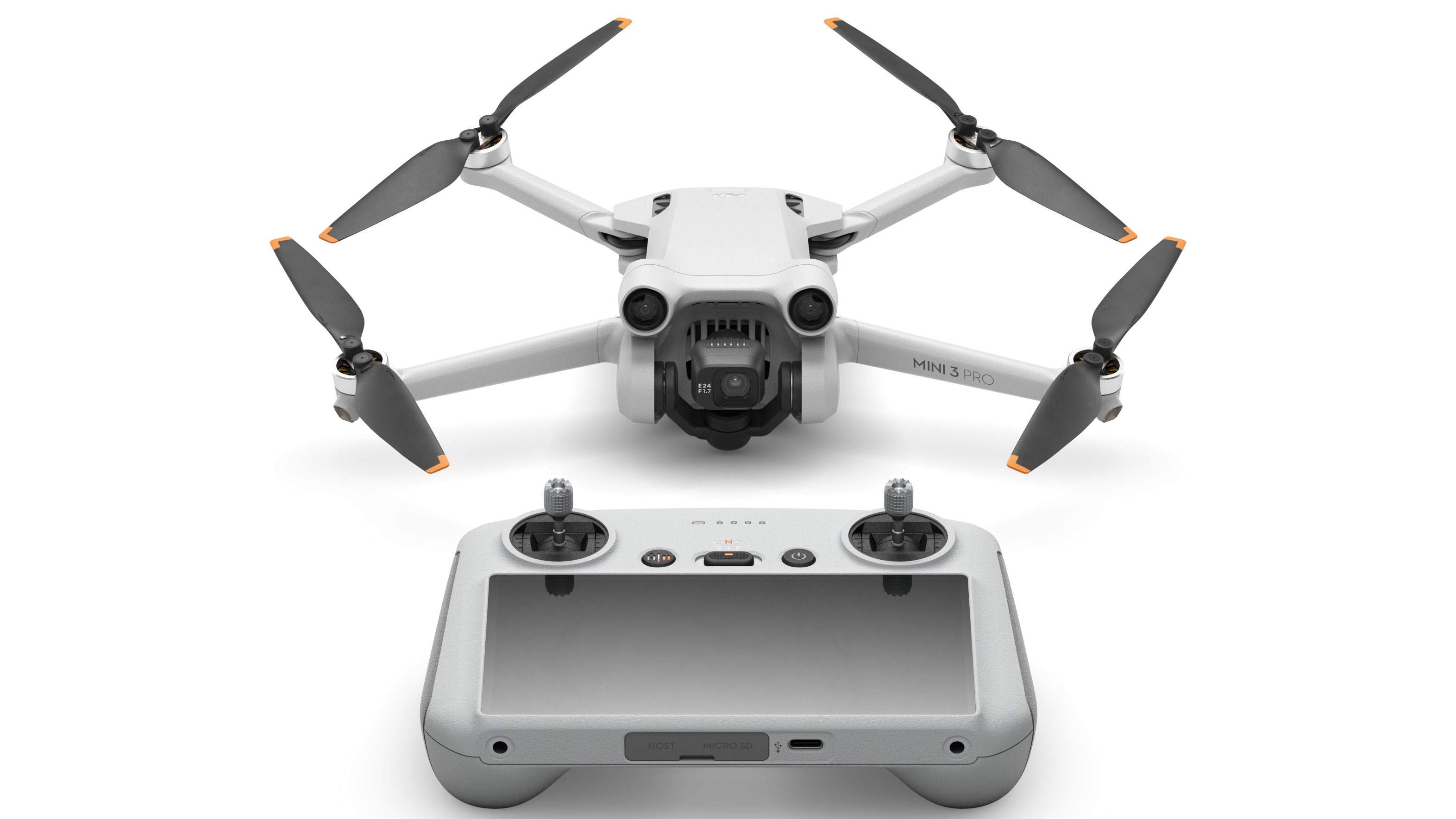DJI Mini 3 Pro sets new standard for fuss-free lightweight camera drones
Leading consumer drone company DJI launches the Mini 3 Pro, bringing high end features to the crucial low-weight category

While previous iterations of DJI’s sub-249g camera drone have all sat some way behind their heavier cousins when it comes to features, the DJI Mini 3 Pro is DJI’s first in this category to offer tri-directional obstacle sensors, as well as offering 4K at 60 fps (topping the Mini 2’s 30fps), ActiveTrack and a vertical camera option to share-friendly images.
This represents a significant leap for DJI in what is – thanks to aviation authority restrictions – easily the most important weight category. Current drone rules in the US, Canada, the UK and Europe are much more relaxed if you fly a drone with a take-off weight under 250g. Following the launch of the Autel EVO Nano, the first 249g drone with collision sensors, the Mini 3 represents DJI’s return competition at this level.
Since the first Mavic Mini, in 2019, DJI have separated the line into a cheaper Mini SE and the more powerful Mini 2, but neither drone offers collision sensors, only landing sensors. The Mini 3, however, adds forward-, backward- and downward-facing sensors, with the forward & backward ones placed in the bumps above the camera.
Tri-directional Obstacle Sensors provide the necessary hardware for Advanced Pilot Assistance Systems 4.0 (APAS). Equipped with this, the drone can navigate around obstacles in flight.
“Today, we share the integration of excellent flight capability, intelligence, and imaging versatility into our ultra-lightweight aerial camera. DJI Mini 3 Pro raises the bar on what a portable, powerful camera drone can achieve” said Ferdinand Wolf, Creative Director at DJI.
The other significant design change from earlier Minis is the camera gimbal, which can be physically rotated to capture an image in vertical format. DJI see this as a feature for social media enthusiasts, and one which will, over time, be better supported by automated functions like panorama modes.
The Mini 3’s camera has a 1/1.3-inch CMOS sensor and dual-native ISO. The f/1.7 aperture has a Smart Photo and 48MP Photo mode (8064×6048 pixels). When capturing video, 2x digital zoom is available in 4K, or 4x in 1080p.
The best camera deals, reviews, product advice, and unmissable photography news, direct to your inbox!
The Mini 3 uses the DJI O3 video transmission system – 1080P 30fps – and launches with a new remote, the DJI RC. With a 5.5-inch touchscreen and the DJI Fly app already integrated, this is effectively a lighter, cheaper remote which doesn’t require connecting to a phone.
DJI will be offering two choices of battery; a 2453 mAh ‘Intelligent Flight Battery’ and a 3850 mAh ‘Intelligent Flight Battery Plus’, with 34 or 47 minutes of forward flight respectively. The larger version will only be available in some markets, and it will push the take-off weight over 249g. The batteries take 64 and 101 minutes to charge with the 30W USB-C charger respectively.
In terms of software, DJI are including their FocusTrack tools: Spotlight 2, Point of Interest 3 and Active Track (previously only seen on the Air and above). The drone will also be equipped with Quickshots, like Dronie, Helix and Rocket, which are also found on the Mini 2.
The DJI Mini 3, with single battery, will retail for $759 / £709 / AU $1,119 with the now established DJI RC-N1 controller, though it’ll also be available without controller for $669 / £639 / AU $989 for DJI users who already have a remote, and $909 / £859 / AU $1,299 with the new DJI RC.
Because the aircraft can be bought in three different configurations, a Fly More Kit (comprising of two intelligent batteries, a charging hub, a bag and some spare propellors) is an optional extra for $189 / £159 / AU $259

With over 20 years of expertise as a tech journalist, Adam brings a wealth of knowledge across a vast number of product categories, including timelapse cameras, home security cameras, NVR cameras, photography books, webcams, 3D printers and 3D scanners, borescopes, radar detectors… and, above all, drones.
Adam is our resident expert on all aspects of camera drones and drone photography, from buying guides on the best choices for aerial photographers of all ability levels to the latest rules and regulations on piloting drones.
He is the author of a number of books including The Complete Guide to Drones, The Smart Smart Home Handbook, 101 Tips for DSLR Video and The Drone Pilot's Handbook.



